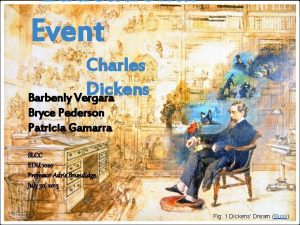Star Formation Histories of z 0 25 Galaxies

- Slides: 1

Star Formation Histories of z <0. 25 Galaxies from GALEX Samir Salim (UCLA) and the GALEX Science Team We derive physical parameters: stellar mass, SFR, dust attenuation and burst mass fractions, for 6500 galaxies observed in the UV by the Galaxy Evolution Explorer (GALEX) and present in the SDSS DR 1 spectroscopic sample. Parameters are estimated by comparing each observed broad-band SED (2 GALEX + 5 SDSS bands) with a library of model galaxy SEDs. We are sensitive to SFRs as low as 10 -3 M⊙/yr. The least massive galaxies have ratios of current to past-averaged SF rates (bparameter) consistent with constant SF over a Hubble time. b correlates tightly with NUV−r color, implying that the SF history of a galaxy can be constrained on the basis of the UV/optical color alone. Also, the fraction of galaxies that have undergone a starburst episode within the last 1 Gyr steeply declines with mass. RESULTS AND ANALYSIS DATA AND SAMPLE Dust attenuation in the UV • Blue points: exp profiles (late type) • Red points: de Vac profiles (early type) • Low-Mass => less attenuation • High-Mass => large range of A(FUV) • Increases with color for late type • Decreases with color for early type GALEX Data • GALEX launched in April 2003 • Surveys the sky in 1. 2 deg FOV in far- and near- UV bands • Currently have 143 sq. deg overlap with SDSS • Obtain FUV (1530 Å) and NUV (2310 Å) photometry SDSS Data • SDSS DR 1 counterparts of GALEX objects • Only objects with “Galaxy” spectroscopic classification • Get redshifts, ugriz photometry • Also morphology data (concentration, profile) Sample • 50 -80% of SDSSsp recovered by GALEX (red end incomplete) • Limit to z<0. 25 (most at z~0. 1) • Sample size: 6500 galaxies NGC 5806 GALEX UV image NGC 5806 SDSS optical METHOD DATA: GALEX UV photometry SDSS ugriz photometry SDSS redshifts COMPARE WITH: Library of model galaxies (model colors) GET: Star Formation History, Mass, Attenuation Library of models • Bruzual & Charlot population synthesis code • Get libraries of model SF histories (100, 000 models) • Exponentially declining SF + random starbursts • Two-component dust attenuation model • Range of metallicities and galaxy ages Deriving parameters • Compare observed 7 -band SED to model SEDs • Find chi 2 goodness of fit for every model galaxy • Based on it determine the weight for the set of model parameters (mass, SFR, age, metallicity, attenuation, burst mass fraction…) • Determine best parameter values and their errors • Results significantly improved compared to fitting using only SDSS 5 bands Mass determination • Kauffmann et al. determined masses using SDSS spectra (Hdelta & D 4000) • Comparison with our determination: • Relative scatter 0. 11 dex • Agrees with individual errors (0. 08 dex) Star formation and SF History • SFR over the last 100 Myr • Lowest SFRs – early types • Our SFRs compare well with those derived from H-alpha • SF History – the “b-parameter” • b = (current SFR)/(past-averaged SFR) • log b = 0 means constant SFR • log b > 1 ongoing bursts • low-Mass: b is close to unity • Tight correlation: log b vs. NUV-r color => use color to get SFH Recent starbursts • Select galaxies which had >5% mass formed in bursts over 100 Myr and over 1 Gyr • Fraction of galaxies (of a given mass) which experienced bursts declines with the mass of a galaxy • Full line – over 1 Gyr • Dashed line – over 100 Myr

